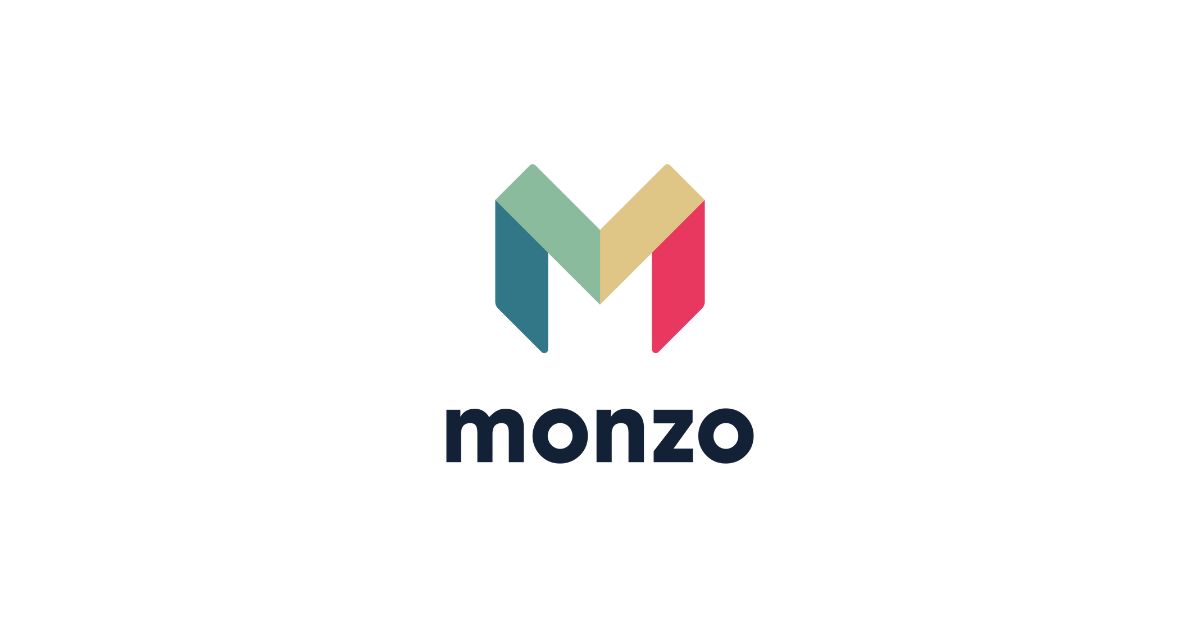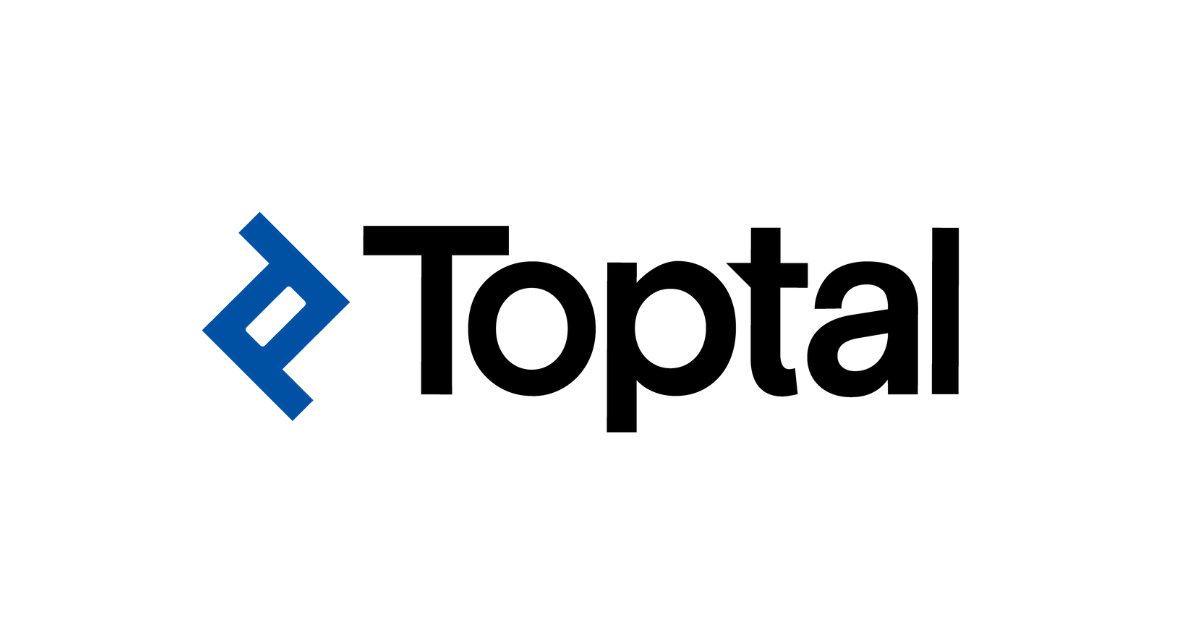200+ Blockchain and Crypto Words: The Ultimate A-Z Glossary
March 16, 2024, 18 min read
Blockchain: Blockchain is a decentralized and distributed digital ledger technology that records transactions across multiple computers in a secure and immutable manner.
Cryptocurrency: Cryptocurrency is a digital or virtual form of currency that uses cryptography for secure financial transactions and operates independently of traditional banking systems.
Bitcoin: Bitcoin is the first and most well-known cryptocurrency, created by an anonymous entity known as Satoshi Nakamoto in 2009. It operates on a decentralized network and uses proof-of-work consensus to validate transactions and create new coins.
Ethereum: Ethereum is a blockchain platform that enables the creation of decentralized applications (DApps) and smart contracts.
Altcoin: Altcoin refers to any cryptocurrency other than Bitcoin. There are thousands of altcoins in the market, each with its own unique features and use cases.
Token: In the context of blockchain and cryptocurrency, a token is a digital asset built on an existing blockchain platform, such as Ethereum.
ICO (Initial Coin Offering): ICO is a fundraising method where new cryptocurrency projects offer their native tokens to investors in exchange for established cryptocurrencies or fiat money.
Smart Contract: Smart contracts are self-executing contracts with the terms of the agreement directly written into lines of code. They automatically execute and enforce the terms when specific conditions are met, without the need for intermediaries.
Decentralized: Decentralized refers to a system or network that operates without a central authority or single point of control.
Ledger: A ledger is a record-keeping system that tracks and records transactions. In the context of blockchain, the ledger is distributed across multiple nodes, and each block contains a list of transactions.
Mining: Mining is the process of validating transactions and adding them to the blockchain.
Hash: A hash is a fixed-length alphanumeric string generated from input data through a cryptographic hash function. It is a unique identifier for a block of data in the blockchain.
Public Key: In public-key cryptography, a public key is a cryptographic key used to encrypt data and is widely shared with others to facilitate secure communication.
Private Key: A private key is a cryptographic key that is kept secret and used to decrypt data encrypted with the corresponding public key. It is essential for secure access to a user’s cryptocurrency holdings.
Wallet: A wallet is a digital tool that allows users to store, send, and receive cryptocurrencies. It holds the private keys necessary to access and manage the user’s digital assets.
Exchange: A cryptocurrency exchange is a platform that enables users to buy, sell, and trade cryptocurrencies with other users. It acts as an intermediary to facilitate these transactions.
Decentralized Finance (DeFi): DeFi refers to a set of financial services and applications built on blockchain platforms that aim to eliminate traditional intermediaries and provide open, permissionless access to financial services.
Proof of Work (PoW): PoW is a consensus mechanism used in blockchains, such as Bitcoin, where miners compete to solve complex mathematical puzzles to validate transactions and create new blocks.
Proof of Stake (PoS): PoS is a consensus mechanism used in some blockchains where validators are chosen to create new blocks based on the number of coins they hold and are willing to “stake” as collateral.
Consensus: Consensus is the process of achieving agreement among multiple participants in a network regarding the validity of transactions and the state of the blockchain.
Fork: A fork occurs when a blockchain splits into two separate chains due to a change in protocol rules. This can be either a hard fork, which results in a permanent split, or a soft fork, which is backward compatible.
Altseason: Altseason refers to a period in the cryptocurrency market when the prices of altcoins experience significant growth and outperform Bitcoin.
Stablecoin: A stablecoin is a type of cryptocurrency designed to have a stable value by pegging it to a fiat currency or a basket of assets.
Fiat Currency: Fiat currency is a government-issued currency that is not backed by a physical commodity but derives its value from the trust and confidence of the people using it.
DApp (Decentralized Application): A DApp is an application that runs on a decentralized network, typically a blockchain, and operates with open-source code and without a central authority controlling it.
ERC-20: ERC-20 is a technical standard used on the Ethereum blockchain for creating fungible tokens that can be easily exchanged with each other.
Gas (Ethereum Gas): Gas in the context of Ethereum refers to the fee required to execute transactions and smart contracts on the Ethereum network. It is denoted in ether and serves as an incentive for miners to process transactions.
Node: A node is a computer or device that participates in maintaining the blockchain network by storing a copy of the entire blockchain and validating transactions.
Peer-to-Peer (P2P): Peer-to-peer refers to direct interactions between individuals without the involvement of intermediaries or central authorities.
Blockchain Explorer: A blockchain explorer is a web application that allows users to explore and view information about transactions, addresses, and blocks on a blockchain.
Hashrate: Hashrate is the measure of the processing power of a blockchain network, typically in terms of the number of hashes it can perform per second.
Cryptography: Cryptography is the practice of secure communication by converting data into a code that can only be understood by authorized parties.
Cold Wallet: A cold wallet is a cryptocurrency wallet that is not connected to the internet, providing enhanced security against online threats.
Hot Wallet: A hot wallet is a cryptocurrency wallet that is connected to the internet, making it more convenient for frequent transactions but potentially less secure.
Tokenomics: Tokenomics refers to the economic design and structure of a cryptocurrency token, including factors like token supply, distribution, and its utility within the ecosystem.
Solidity: Solidity is a programming language used to write smart contracts on the Ethereum platform.
Whitepaper: A whitepaper is a comprehensive document that outlines the concept, technology, goals, and implementation details of a blockchain or cryptocurrency project.
Token Sale: A token sale is a fundraising event in which new tokens are sold to investors or the public in exchange for funds.
Hard Fork: A hard fork is a permanent divergence in a blockchain due to a change in the protocol rules, resulting in two separate and incompatible blockchains.
Soft Fork: A soft fork is a backward-compatible protocol upgrade in a blockchain network, where
the new rules are still accepted by the old nodes.
Immutable: In the context of blockchain, immutability means that once data is recorded on the blockchain, it cannot be altered or deleted.
Smart Property: Smart property refers to physical assets that are represented and controlled by smart contracts on the blockchain.
51% Attack: A 51% attack occurs when a single entity or group gains control of more than 50% of a blockchain network’s computing power, potentially enabling them to manipulate transactions.
Private Blockchain: A private blockchain is a closed and permissioned blockchain that restricts access and participation to a selected group of users or entities.
Public Blockchain: A public blockchain is an open and permissionless blockchain that allows anyone to participate, view, and verify transactions.
Permissioned Blockchain: A permissioned blockchain is a type of blockchain where access and participation are restricted to pre-approved entities.
Permissionless Blockchain: A permissionless blockchain is a type of blockchain where anyone can join the network and participate without needing prior approval.
Oracles: Oracles are third-party services or agents that provide external data to smart contracts on the blockchain, enabling them to interact with real-world events and data.
Double Spending: Double spending refers to the act of spending the same cryptocurrency more than once, which is prevented in blockchain systems through consensus mechanisms.
Initial Exchange Offering (IEO): An IEO is a token sale conducted directly on a cryptocurrency exchange, which facilitates the fundraising process and provides a platform for immediate trading of the newly issued tokens.
Multi-Signature (Multisig): Multi-signature is a security feature that requires multiple private keys to authorize a transaction, enhancing the security of cryptocurrency holdings.
Wallet Address: A wallet address is a unique alphanumeric string that serves as the destination for sending and receiving cryptocurrencies.
Merkle Tree: A Merkle tree is a data structure used in blockchain to efficiently summarize and verify large sets of data.
Byzantine Fault Tolerance (BFT): BFT is a property that ensures a distributed system can continue to operate and reach consensus even if some nodes are faulty or malicious.
SHA-256: SHA-256 is a cryptographic hash function used in Bitcoin’s proof-of-work consensus mechanism.
Keccak (SHA-3): Keccak is a cryptographic hash function used in some blockchains as an alternative to SHA-256.
SegWit (Segregated Witness): SegWit is a protocol upgrade implemented in the Bitcoin network to increase transaction capacity and address certain security and scalability issues.
Cross-Chain: Cross-chain refers to the ability of different blockchain networks to interoperate
and communicate with each other.
Atomic Swap: Atomic swap is a technology that allows for direct peer-to-peer trading of different cryptocurrencies without the need for an intermediary.
Layer 2 Scaling: Layer 2 scaling solutions are technologies built on top of a blockchain that aim to increase the throughput and efficiency of the network.
Lightning Network: The Lightning Network is a second-layer solution for Bitcoin that enables faster and cheaper transactions by creating payment channels between users.
Raiden Network: The Raiden Network is a second-layer scaling solution for Ethereum, enabling off-chain transactions and micropayments.
Plasma: Plasma is a scaling solution for Ethereum that creates a network of interconnected blockchains, reducing the burden on the main Ethereum chain.
Interoperability: Interoperability refers to the ability of different blockchain networks to communicate and interact with each other seamlessly.
Privacy Coin: A privacy coin is a type of cryptocurrency that provides enhanced privacy and anonymity for its users’ transactions.
Monero: Monero is a privacy-focused cryptocurrency known for its strong privacy features, including stealth addresses and ring signatures.
Zcash: Zcash is another privacy-focused cryptocurrency that allows users to transact with enhanced privacy using zero-knowledge proofs.
Mimblewimble: Mimblewimble is a privacy protocol that aims to improve the privacy and scalability of blockchain transactions.
Ring Signature: A ring signature is a cryptographic technique used to enhance the privacy of transactions by obfuscating the identity of the signer.
Zero-Knowledge Proof: A zero-knowledge proof is a cryptographic method that allows one party to prove the validity of a statement without revealing any additional information.
Hash Function: A hash function is a mathematical algorithm that converts input data into a fixed-length alphanumeric string.
Token Standard: A token standard is a set of rules and protocols that govern the creation and behavior of tokens on a blockchain.
Non-Fungible Token (NFT): NFTs are unique and indivisible tokens that represent ownership of digital or physical assets, often used for digital art, collectibles, and unique items.
Utility Token: A utility token is a type of cryptocurrency that grants access to a specific product or service on a blockchain platform.
Security Token: A security token represents ownership of a traditional asset, such as equity or debt, and is subject to securities regulations.
Airdrop: An airdrop is a distribution of free cryptocurrency tokens to a group of users as a marketing or promotional campaign.
Whale: In the cryptocurrency market, a whale refers to an individual or entity that holds a large amount of cryptocurrency.
HODL: HODL is a term derived from a misspelling of “hold” and is used to encourage investors to hold onto their cryptocurrencies instead of selling them.
FOMO (Fear Of Missing Out): FOMO refers to the fear of missing out on potential profits, which can lead individuals to make impulsive investment decisions.
FUD (Fear, Uncertainty, Doubt): FUD refers to the spread of negative information or rumors to create fear and uncertainty in the cryptocurrency market.
ATH (All-Time High): ATH is the highest price that a cryptocurrency has ever reached in its history.
Bear Market: A bear market is a period of declining prices and negative sentiment in the cryptocurrency market.
Bull Market: A bull market is a period of rising prices and positive sentiment in the cryptocurrency market.
Market Cap: Market capitalization is the total value of a cryptocurrency, calculated by multiplying its current price by the total number of coins in circulation.
Market Order: A market order is a buy or sell order that is executed immediately at the best available market price.
Limit Order: A limit order is a buy or sell order that is executed only at a specified price or better.
Liquidity: Liquidity refers to the ease with which a cryptocurrency can be bought or sold without significantly affecting its price.
Cryptocurrency Exchange: A cryptocurrency exchange is a platform where users can buy, sell, and trade cryptocurrencies.
Centralized Exchange (CEX): A centralized exchange is a cryptocurrency exchange that operates under the control of a single organization.
Decentralized Exchange (DEX): A decentralized exchange is a cryptocurrency exchange that operates on a peer-to-peer basis without a central authority.
Custodial Wallet: A custodial wallet is a type of cryptocurrency wallet where a third party holds and manages the user’s private keys.
Non-Custodial Wallet: A non-custodial wallet is a type of cryptocurrency wallet where the user retains full control of their private keys.
Paper Wallet: A paper wallet is a physical piece of paper with printed private and public keys used to store cryptocurrency offline.
Hardware Wallet: A hardware wallet is a physical device that securely stores private keys offline, offering enhanced security.
Software Wallet: A software wallet is a digital application used to manage and store cryptocurrency keys on a computer or mobile device.
Multicurrency Wallet: A multicurrency wallet is a type of cryptocurrency wallet that can store multiple cryptocurrencies.
Web Wallet: A web wallet is a browser-based cryptocurrency wallet accessed through a web browser.
Private Key Encryption: Private key encryption is the process of securing private keys with cryptographic algorithms to prevent unauthorized access.
Two-Factor Authentication (2FA): 2FA is an extra layer of security that requires users to provide two different forms of identification before accessing their accounts.
Token Swap: A token swap is a process in which a cryptocurrency is exchanged for a new token at a predetermined ratio.
Token Burn: Token burn refers to the deliberate destruction of a certain number of tokens to reduce the total supply and increase the value of the remaining tokens.
Token Vesting: Token vesting is a mechanism that restricts the immediate access to newly acquired tokens, unlocking them gradually over a predetermined period.
Token Lockup: Token lockup refers to a period during which certain tokens are inaccessible and cannot be traded or transferred.
Token Migration: Token migration is the process of moving tokens from one blockchain to another, often to improve scalability or implement upgrades.
Token Distribution: Token distribution is the process of allocating and distributing newly minted tokens to their intended recipients.
Token Airdrop: A token airdrop is a distribution of free tokens to existing cryptocurrency holders as a marketing strategy.
Tokenomics: Tokenomics refers to the economic model and design of a cryptocurrency token, including its supply, distribution, and utility.
Token Utility: Token utility refers to the specific use cases and functions that a cryptocurrency token serves within its ecosystem.
Token Ecosystem: A token ecosystem refers to the network of applications, services, and stakeholders that interact with a specific cryptocurrency token.
Token Supply: Token supply is the total number of tokens that will ever be created for a specific cryptocurrency.
Token Circulation: Token circulation refers to the total number of tokens actively moving within a cryptocurrency ecosystem.
Token Liquidity: Token liquidity refers to the ease with which a token can be bought or sold in the market without significantly affecting its price.
Token Governance: Token governance refers to the mechanisms and processes by which decisions are made and changes are implemented in a blockchain project’s ecosystem.
Token Staking: Token staking is the process of locking up tokens to participate in the consensus mechanism or governance of a blockchain network.
Token Rewards: Token rewards are incentives given to participants for their contributions to a blockchain network, such as validating transactions or providing liquidity.
Token Burning: Token burning is the process of permanently removing tokens from circulation, typically to reduce the total supply and increase scarcity.
Token Sale Whitelist: A token sale whitelist is a list of approved participants who are allowed to participate in a token sale.
Token Sale KYC: Token sale KYC (Know Your Customer) refers to the process of verifying the identities of token sale participants to comply with regulatory requirements.
Token Sale Pre-Sale: A token sale pre-sale is a private fundraising round conducted before the main token sale, often with more favorable terms for early investors.
Token Sale Public Sale: A token sale public sale is the main phase of a token sale where tokens are offered to the general public.
Token Sale Soft Cap: A token sale soft cap is the minimum amount of funds a project aims to raise during the token sale to proceed with its development.
Token Sale Hard Cap: A token sale hard cap is the maximum amount of funds a project aims to raise during the token sale.
Token Sale Initial Liquidity Offering (ILO): An ILO is a token sale that is conducted directly on a decentralized exchange to provide immediate liquidity to the newly issued tokens.
Token Sale Initial DEX Offering (IDO): An IDO is a token sale conducted on a decentralized exchange to enable direct and instant trading of the newly issued tokens.
Token Sale Security Token Offering (STO): An STO is a token sale that offers security tokens, which represent ownership in a regulated asset.
Token Sale Utility Token Offering (UTO): A UTO is a token sale that offers utility tokens, which grant access to specific services or products.
Token Sale Equity Token Offering (ETO): An ETO is a token sale that offers equity tokens, which represent ownership in a company or project.
Token Sale Decentralized Autonomous Organization (DAO): A token sale DAO is a fundraising event that aims to establish a decentralized organization with decision-making capabilities.
Token Sale Launchpad: A token sale launchpad is a platform that facilitates and conducts token sales for various cryptocurrency projects.
Token Sale Smart Contract: A token sale smart contract is a self-executing contract that governs the rules and conditions of a token sale.
Token Sale Whitepaper: A token sale whitepaper is a comprehensive document that outlines the details and goals of a cryptocurrency project and its token sale.
Token Sale Roadmap: A token sale roadmap is a strategic plan that outlines the project’s milestones and development timeline.
Token Sale Lockup Period: A token sale lockup period is a duration during which certain tokens acquired during a token sale cannot be traded or transferred.
Token Sale AML (Anti-Money Laundering): Token sale AML is the process of preventing and detecting money laundering activities during a token sale.
Token Sale Vesting Period: A token sale vesting period is the duration over which tokens allocated to team members or advisors are gradually released.
Token Sale Token Allocation: A token sale token allocation is the distribution of tokens among different categories, such as team, advisors, community, and investors.
Token Sale Team Allocation: Team allocation refers to the portion of tokens allocated to the core development team of a cryptocurrency project.
Token Sale Advisor Allocation: Advisor allocation refers to the portion of tokens allocated to external advisors who provide guidance and expertise to the project.
Token Sale Reserve Allocation: Reserve allocation refers to the portion of tokens allocated to be held in reserve for future use or strategic initiatives.
Token Sale Community Allocation: Community allocation refers to the portion of tokens allocated to the project’s community members, often for marketing and ecosystem growth.
Token Sale Private Sale: A token sale private sale is a pre-sale conducted with a select group of
investors before the public sale.
Token Sale Public Sale: A token sale public sale is the main phase of a token sale where tokens are offered to the general public.
Token Sale Whitelist: A token sale whitelist is a list of approved participants who are allowed to participate in a token sale.
Token Sale Whitelisting: Token sale whitelisting is the process of registering to participate in a token sale by providing required information to the project team.
Token Sale Community Sale: A token sale community sale refers to a phase of the token sale reserved for members of the project’s community.
Token Sale Pre-Sale: A token sale pre-sale is a private fundraising round conducted before the main token sale, often with more favorable terms for early investors.
Token Sale Crowdsale: A token sale crowdsale is the main phase of a token sale open to the general public.
Token Sale ICO Drops: ICO drops refer to a platform or website that provides information about upcoming initial coin offerings (ICOs) and token sales.
Token Sale CoinGecko: CoinGecko is a popular cryptocurrency data aggregator that provides information about cryptocurrency projects, including token sales.
Token Sale CoinMarketCap: CoinMarketCap is a leading cryptocurrency market data platform that provides information about cryptocurrency projects, including token sales.
Token Sale Tokenomics: Tokenomics refers to the economic model and design of a cryptocurrency token, including its supply, distribution, and utility.
Token Sale Token Metrics: Token metrics refer to various parameters and statistics that describe a cryptocurrency token, such as market cap, circulating supply, and price.
Token Sale Exchange Listing: Exchange listing refers to the process of a cryptocurrency token
being listed and available for trading on a cryptocurrency exchange.
Token Sale Trading Pair: A trading pair is a set of two different cryptocurrencies that can be exchanged with each other on a cryptocurrency exchange.
Token Sale DEX (Decentralized Exchange): A DEX is a cryptocurrency exchange that operates on a decentralized network without a central authority.
Token Sale CEX (Centralized Exchange): A CEX is a cryptocurrency exchange that operates
under the control of a single organization.
Token Sale Liquidity Pool: A liquidity pool is a pool of funds locked in a smart contract that provides liquidity for decentralized exchanges and automated market makers.
Token Sale IDO (Initial DEX Offering): An IDO is a token sale conducted on a decentralized exchange to enable direct and instant trading of the newly issued tokens.
Token Sale P2P (Peer-to-Peer): A peer-to-peer token sale allows for direct transactions between buyers and sellers without the involvement of intermediaries.
Token Sale Yield Farming: Yield farming is a process where users provide liquidity to decentralized finance (DeFi) protocols and earn rewards in the form of tokens.
Token Sale DeFi (Decentralized Finance): DeFi refers to a set of financial services and applications built on blockchain platforms that aim to eliminate traditional intermediaries.
Token Sale Yield Aggregator: A yield aggregator is a smart contract or platform that maximizes yield farming rewards by automatically moving funds between different protocols.
Token Sale Liquidity Mining: Liquidity mining is a process where users provide liquidity to decentralized finance (DeFi) protocols and receive rewards in the form of tokens.
Token Sale Impermanent Loss: Impermanent loss refers to a temporary loss experienced by liquidity providers due to the price volatility of the assets they have provided.
Token Sale Farming Pool: A farming pool is a pool of funds contributed by multiple users to participate in yield farming and liquidity provision.
Token Sale Staking Pool: A staking pool is a pool of tokens contributed by multiple users to participate in proof-of-stake consensus mechanisms.
Token Sale AMM (Automated Market Maker): An AMM is a decentralized exchange mechanism that uses algorithms to set prices based on supply and demand.
Token Sale LP Token: LP tokens represent a user’s share of a liquidity pool and are received by liquidity providers as proof of their contribution.
Token Sale LP Rewards: LP rewards are the incentives given to liquidity providers for participating in a liquidity pool.
Token Sale Gas Fees: Gas fees are the transaction fees paid to miners to process and validate
transactions on the blockchain.
Token Sale Impermanent Loss Insurance: Impermanent loss insurance is a feature that compensates liquidity providers for potential losses in a liquidity pool.
Token Sale Slippage: Slippage refers to the difference between the expected price of a trade and the actual executed price.
Token Sale Token Contract Address: The token contract address is a unique identifier for a cryptocurrency token on a blockchain network.
Token Sale Token Explorer: A token explorer is a web application that allows users to view and explore details about a specific cryptocurrency token.
Token Sale Token Bridge: A token bridge is a technology that enables the transfer of tokens between different blockchain networks.
Token Sale Token Swap: A token swap is a process in which a cryptocurrency is exchanged for a new token at a predetermined ratio.
Token Sale Token Migration: Token migration is the process of moving tokens from one blockchain to another, often to improve scalability or implement upgrades.
Token Sale Token Burn: Token burn refers to the deliberate destruction of a certain number of tokens to reduce the total supply and increase the value of the remaining tokens.
Token Sale Token Vesting: Token vesting is a mechanism that restricts the immediate access to newly acquired tokens, unlocking them gradually over a predetermined period.
Token Sale Token Lockup: Token lockup refers to a period during which certain tokens acquired during a token sale cannot be traded or transferred.
Token Sale Token Buyback: Token buyback is the process of a project repurchasing its own tokens from the market to reduce the circulating supply.
Token Sale Token Airdrop: A token airdrop is a distribution of free tokens to existing cryptocurrency holders as a marketing strategy.
Token Sale Token Holders: Token holders are individuals or entities that possess and own a specific cryptocurrency token.
Token Sale Token HODLers: Token HODLers are individuals who hold onto their cryptocurrency assets for the long term instead of selling them.
Token Sale Token Economics: Token economics refers to the economic principles and mechanisms that govern the value and utility of a cryptocurrency token.
The above terms provide an overview of various fundamental concepts and terminologies related to blockchain, cryptocurrencies, and token sales. The field of blockchain and cryptocurrency is rapidly evolving, and new terms and developments may arise beyond the scope of this summary.
















